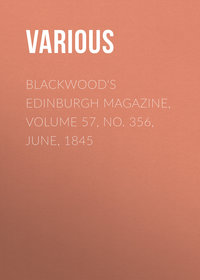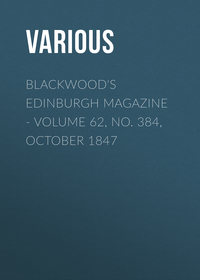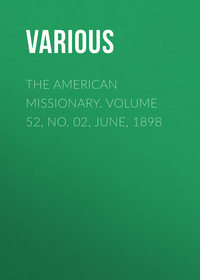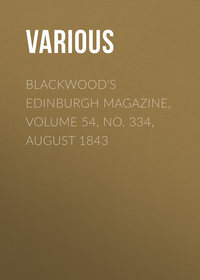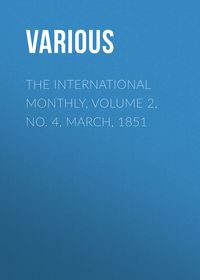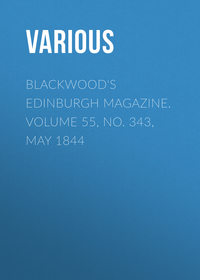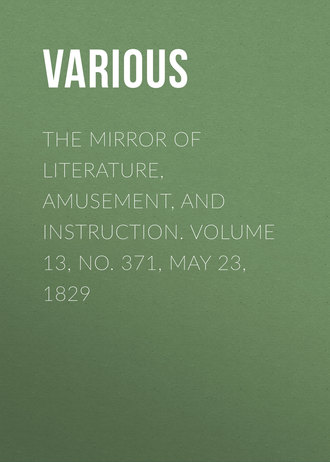 полная версия
полная версияThe Mirror of Literature, Amusement, and Instruction. Volume 13, No. 371, May 23, 1829

Various
The Mirror of Literature, Amusement, and Instruction / Volume 13, No. 371, May 23, 1829
The Fortune Playhouse

The Engraving represents one of the playhouses of Shakspeare's time, as the premises appeared a few years since. This theatre was in Golden Lane, Barbican, and was built by that celebrated and benevolent actor Edward Alleyn, the pious founder of Dulwich College, in 1599. It was burnt in 1624, but rebuilt in 1629. A story is told of a large treasure being found in digging for the foundation, and it is probable that the whole sum fell to Alleyn. Upon equal probability, is the derivation of the name "The Fortune." The theatre was a spacious brick building, and exhibited the royal arms in plaster on its front. These are retained in the Engraving; where the disposal of the lower part on the building into shops, &c. is a sorry picture of the "base purposes" to which a temple of the Drama has been converted.
According to the testimony of Ben Jonson and others, Alleyn was the first actor of his time, and of course played leading characters in the plays of Shakspeare and Jonson. He was probably the Kemble of his day, for his biographers tell us such was his celebrity, that he drew crowds of spectators after him wherever he performed; so that possessing some private patrimony, with a careful and provident disposition, he soon became master of an establishment of his own—and this was the Fortune. Although Alleyn left behind him a large sum, it is hardly probable that he made it here; for in his diary, which, we believe is extant, he records that he once had so slender an audience, that the whole receipts of the house amounted to no more than three pounds and a few odd shillings—a sum which would not pay the expenses; for it appears by the MS. of Lord Stanhope, treasurer to James I. that the customary sum paid for the performance of a play at court, was 20 nobles, or 6l. 12s. 4d.1 Alleyn was likewise proprietor of the Blackfriars' Theatre, near what is still called Playhouse Yard. However he might have gathered laurels on the stage, he must have gained his fortune by other means. He was keeper of the King's Bear Garden and Menagerie, which were frequented by thousands, and produced Alleyn, the then great sum of 500l. per annum. He was also thrice married, and received portions with his two first wives; and we need not insist upon the turn which matrimony gives to a man's fortune.
Among the theatrico-antiquarian gossip of The Fortune is, that it was once the nursery for Henry VIII.'s children—but "no scandal about the"—we hope.
FINE ARTS
EXHIBITION OF THE ROYAL ACADEMY
All men are critics, in a greater or less degree. They can generalize upon the merits and defects of a picture, although they cannot point out the details of the defects, or in what the beauty of a picture consists; and to prove this, only let the reader visit the Exhibition at Somerset House, and watch the little critical coteries that collect round the most attractive paintings. Could all these criticisms be embodied, but in "terms of art," what a fine lecture would they make for the Royal Academy.
Our discursive notice would, probably, contribute but little to this joint-stock production; but as even comparing notes is not always unprofitable, we venture to give our own.
The present Exhibition is much superior to that of last year. There are more works of imagination, and consequently greater attractions for the lover of painting; for life-breathing as have been many of the portraits in recent exhibitions, the interest which they created was of quite a different nature to that which we take in not a few of the pictures of the present collection. Portraits still superabound, and finely painted portraits too; but, strange to say, there are fewer female portraits in the present than in any recent exhibition.
But the elite are seven pictures by Mr. Wilkie, who has reappeared, as it were, in British art, after an absence from England; during which he appears to have studied manners and costume with beautiful effect; and the paintings to which we allude, are triumphant proofs of his success. They are embodiments or realizations of character, manners, and scenery, with which the painter has been wont to mix, and thus to transfer them to his canvass with vividness and fidelity—merits of the highest order in all successes of art. We shall touch upon these pictures in our ramble through the rooms—
4. Subject from the Revelations.—F. Danby—A sublime composition.
10. The Fountain: morning.—A.W. Callcott. A delightful picture.
14. Rubens and the Philosopher.—G. Clint. The anecdote of Rubens and Brondel, the alchemist, remarkably well told.
16. Benaiah.—W. Etty—The line in 2 Samuel xxiii. 20., "he slew two lion-like men of Moab," has furnished Mr. Etty with the subject of this picture. It is a surprising rather than a pleasing composition; but the strength of colouring is very extraordinary. The disproportions of parts of the principal figure will, however, be recognised by the most casual beholder: although as a fine display of muscular energy, this picture is truly valuable, and is a proud specimen of the powerful genius of the painter.
28. Waterfall near Vatlagunta, in the peninsula of India, in the mountains that divide the Coasts of Coromandel and Malabar: its height between 500 and 600 feet.—W. Daniell.—The sublime and stupendous character of the scenery will enable the reader to form some idea of the difficulty with which the artist had to contend.
43. The Lady in St. Swithin's Chair from vol. i. Waverley.—Sir W. Beechey.—We confess ourselves far from pleased with this picture. There is a want of freedom in it which is any thing but characteristic of the incident which it is intended to portray.
56. The Spanish Posado.—D. Wilkie.—We must describe this picture in the words of the catalogue:—
This represents a Guerrilla council of war, at which three reverend fathers—a Dominican, a monk of the Escurial, and a Jesuit, are deliberating on some expedient of national defence, with an emissary in the costume of Valencia. Behind them is the posadera, or landlady, serving her guests with chocolate, and the begging student of Salamanca, with his lexicon and cigar, making love to her. On the right of the picture, a contrabandist of Bilboa enters, upon his mule, and in front of him is an athletic Castilian armed, and a minstrel dwarf, with a Spanish guitar. On the floor are seated the goatherd and his sister, with the muzzled house-dog and pet lamb of the family, and through the open portal in the background is a distant view of the Guadarama mountains—It is next to impossible for us to do justice to the diversified character of this picture. The deliberation of the fathers, and the little bit of episode between the landlady and student are extremely interesting.
(To be continued.)SPITTLE-FIELDS, AND WEAVING IN FORMER DAYS
(For the Mirror.)Stowe says, "On the east side of the churchyard of St. Mary Spittle, lyeth a large field, of old time called Lolesworth, now Spittle-Field, which about the year 1576, was broken up for clay to make bricke; in digging thereof many earthen pots called urnae, were found full of ashes and the bones of men, to wit of the Romans that inhabited here. For it was the custom of the Romans to burne their dead, to put their ashes in an urne, and then bury the same with certain ceremonies, in some field appointed for the purpose neere unto their city. Every one of these pots had in them (with the ashes of the dead) one piece of copper money, with an inscription of the emperor then reigning. Some of them were of Claudius, some of Vespasian, some of Nero, &c. There hath also been found (in the same field) divers coffins of stone, containing the bones of men; these I suppose to be the bones of some speciall persons, in the time of the Brittons, or Saxons, after that the Romans had left to govern here.
"The priory and hospital of St. Mary Spittle, was founded (says Pennant) in 1197, by Walter Brune, Sheriff of London, and his wife, Rosia, for canons regular of the order of St. Augustine. It was remarkable for its pulpit cross, at which a preacher used to preach a sermon consolidated out of four others, which had been preached at St. Paul's Cross, on Good Friday, and the Monday, Tuesday, and Wednesday in Easter week; giving afterwards a sermon of his own. At these sermons the mayor and aldermen attended, dressed in different coloured robes on each occasion. This custom continued till the destruction of church government in the civil wars. They have since been transferred to St. Bride's Church. Queen Elizabeth, in April, 1559, visited St. Mary Spittal, in great state, probably to hear a sermon delivered from the cross. This princess was attended by a thousand men in harness with shirts of mail and corslets, and morice pikes, and ten great pieces carried through London unto the court, with drums and trumpets sounding, and two morice-dancers, and in a cart two white bears."
The priory of St. Mary, of St. Mary Spittle, contained at its dissolution, about the year 1536, no less than 180 beds for the reception of sick persons and travellers. Richard Tarleton, the famous comedian, at the Curtain Theatre, it is said, "kept an ordinary in Spittle-fields, pleasant fields for the citizens to walk in;" and the row called Paternoster Row, as the name implies, was formerly a few houses, where they sold rosaries, relics, &c. The once celebrated herbalist and astrologer, Nicholas Culpepper, was another inhabitant of this spot. He died in 1654, in a house he had some time occupied, very pleasantly situated in the fields; but now a public house at the corner of Red Lion Court, Red Lion Street, east of Spittlefields market. The house, though it has undergone several repairs, still exhibits the appearance of one of those that formed a part of old London. The weaving art, which has arrived at such an astonishing perfection, was patronized by the wise and liberal Edward III., who encouraged the art by the most advantageous offers of reward and encouragement to weavers who would come and settle in England. In 1331, two weavers came from Brabant and settled at York. The superior skill and dexterity of these men, who communicated their knowledge to others, soon manifested itself in the improvement and spread of the art of weaving in this island. Many Flemish weavers were driven from their native country by the cruel persecutions of the Duke d'Alva, in 1567. They settled in different parts of England, and introduced and promoted the manufacture of baizes, serges, crapes, &c. The arts of spinning, throwing, and weaving silk, were brought into England about the middle of the fifteenth century, and were practised by a company of women in London, called silk women. About 1480, men began to engage in the silk manufacture, and in the year 1686, nearly 50,000 manufacturers, of various descriptions, took refuge in England, in consequence of the revocation of the Edict of Nantz, by Louis le Grand, who sent thousands (says Pennant) of the most industrious of his subjects into this kingdom to present his bitterest enemies with the arts and manufactures of his kingdom; hence the origin of the silk trade in Spittlefields.
P. T. WTHE BIRD OF THE TOMB
BY LEIGH CLIFFE(For the Mirror.)In "Lyon's attempt to reach Repulse Bay," the following passage, which suggested these verses, may be met with. "Near the large grave was a third pile of stones, covering the body of a child. A Snow-Buntin (the Red-Breast of the Arctic Regions) had found its way through the loose stones which composed this little tomb, and its now forsaken, neatly built nest, was found placed on the neck of the child."
Beneath the chilly Arctic clime,Where Nature reigns severe, sublime,Enthron'd upon eternal snows,Or rides the waves on icy floes—Where fierce tremendous tempests sweepThe bosom of the rolling deep,And beating rain, and drifting hailSwell the wild fury of the gale;There is a little, humble tomb,Not deckt with sculpture's pageant pride,Nor labour'd verse to tell by whomThe habitant was lov'd who died!No trophied 'scutcheon marks the grave—No blazon'd banners round it wave—'Tis but a simple pile of stonesRais'd o'er a hapless infant's bones;Perchance a mother's tears have dew'dThis sepulchre, so frail and rude;—A father mourn'd in accents wild,His offspring lost—his only child—Who might, in after years, have spreadA ray of honour round his head,Nor thought, as stone on stone he threw,His child would meet a stranger's view.But, lo! upon its clay-cold breast,The Arctic Robin rais'd its nest,And rear'd its little fluttering young,Where Death in awful quiet slept,And fearless chirp'd, and gaily sungAround the babe its parents wept.It was the guardian of the grave,And thus its chirping seem'd to say:—"Tho' naught from Death's chill grasp could save,Tho' naught could chase his power away—As round this humble spot I wing,My thrilling voice shall daily singA requiem o'er the faded flower,That bloom'd and wither'd in an hour,And prov'd life is, in every view,Naught but a rose-bud twin'd with rue.A blossom born at day's first light,And fading with the earliest night;Nor stranger's step, nor shrieking loom,Shall scare the warbler from the tomb'"CURING THE "KING'S EVIL."
(To the Editor of the Mirror.)About five miles from Sturminster Newton, and near the village of Hazlebury, resides a Dr. B–, who has attained a reputation, far extended, for curing, in a miraculous manner, the king's evil; and as the method he employs is very different from that of most modern practitioners, a short account of it may, perhaps, be acceptable to the readers of the MIRROR.
I had long known that the doctor used some particular season for his operations, but was unable to say precisely the time, until a few days since I had a conversation with a person who is well acquainted with the doctor and his yearly "fair, or feast," as it is termed. Exactly twenty-four hours before the new moon, in the month of May, every year, whether it happens by night or by day, the afflicted persons assemble at the doctor's residence, where they are supplied, by him, with the hind legs of a toad! yes, gentle reader a toad—don't start—enclosed in a small bag (accompanied, I believe, with some verbal charm, or incantation,) and also a lotion and salve of the doctor's preparation. The bag containing the legs of the reptile is worn suspended from the neck of the patient, and the lotion and salve applied in the usual manner, until the cure is completed, or until the next year's "fair."
One would think that such a mysterious routine of doctoring, would attract but few, and those the most illiterate; but I can assure my readers the case is different. The number of carts, chaises, and other conveyances laden with the afflicted which passed through this place on the 2nd instant, bore ample testimony to the number of the doctor's applicants; and the appearance of many of them corroborated the opinion that they moved in a respectable sphere of life.
The new moon happening this year on the 3rd instant, at 57 minutes past 7 o'clock in the morning, the "fair" took place at the same hour the preceding day.
My readers, no doubt, have heard of the efficacy of the stone in the toad's head, alluded to by Shakspeare,2 for curing the cramp, &c. by application to the afflicted part; but it was left for Dr. B– to discover the virtues of a toad's leg. Apropos, an eccentric friend of mine, once gravely told me he intended to procure this precious Bufonian jewel; and as probably some reader may feel a wish to possess it, I will furnish him with the proper method of obtaining it, as communicated by my scientific friend. Voici—Cut off poor bufo's head and enclose it in a small box pierced with many holes; place it in an ant hill, and let it remain some ten or twelve days, in which time, or a little longer, the ants will have entered and eaten up every part except the stone. RURIS.
"THE MORNING STAR."
(For the Mirror.)Queen of celestial beauty! Morning Star!Accept a humble bard's untut'red lay;To him, thy loveliness, surpasseth farThe silv'ry moon, and eke the God of day.The world with all its pride cannot displayA form so fair, so beautiful as thine;Its glories fade, its proudest beauties die;But you fair star! as first created shine,In never fading immortality!Like vice, from virtue's glance, yon clouds retire,Before the smile of one benignant ray,Sleepless and sad, my soul would fain aspire,Promethean like, to snatch ethereal fire,And draw relief from thee! bright harbinger of day!JNO. JONESThe Sketch-Book
SCHINDERHANNES, THE GERMAN ROBBER
At the commencement of the French Revolution, and for some time after, the two banks of the Rhine were the theatre of continual wars. Commerce was interrupted, industry destroyed, the fields ravaged, and the barns and cottages plundered; farmers and merchants became bankrupts, and journeymen and labourers thieves. Robbery was the only mechanical art which was worth pursuing, and the only exercises followed were assault and battery. These enterprises were carried on at first by individuals trading on their own capital of skill and courage; but when the French laws came into more active operation in the seat of their exploits, the desperadoes formed themselves, for mutual protection, into copartnerships, which were the terror of the country. Men soon arose among them whose talents, or prowess, attracted the confidence of their comrades, and chiefs were elected, and laws and institutions established. Different places of settlement were chosen by different societies; the famous Pickard carried his band into Belgium and Holland; while on the confines of Germany, where the wild provinces of Kirn, Simmerm, and Birkenfield offered a congenial field, the banditti were concentrated, whose last and most celebrated chief, the redoubted Schinderhannes, is the subject of this brief notice.
His predecessors, indeed, Finck, Peter the Black, Zughetto, and Seibert were long before renowned among those who square their conduct by the good old rule of clubs; they were brave men, and stout and pitiless robbers. But Schinderhannes, the boldest of the bold, young, active and subtle, converted the obscure exploits of banditti into the comparatively magnificent ravages of "the outlaw and his men;" and sometimes marched at the head of sixty or eighty of his troop to the attack of whole villages. Devoted to pleasure, no fear ever crossed him in its pursuit; he walked publicly with his mistress, a beautiful girl of nineteen, in the very place which the evening before had been the scene of one of his criminal exploits; he frequented the fairs and taverns, which were crowded with his victims; and such was the terror he had inspired, that these audacious exposures were made with perfect impunity. Free, generous, handsome, and jovial, it may even be conceived that sometime he gained the protection from love which could not have been extorted by force.
It is scarcely a wonder that with the admirable regulations of the robbers, they should have succeeded even to so great an extent as they did in that unsettled country. Not more than two or three of them were allowed to reside in the same town or village; they were scattered over the whole face of the district, and apparently connected with each other only by some mysterious free-masonry of their craft. When a blow was to be struck, a messenger was sent round by the chief to warn his followers; and at the mustering place the united band rose up, like the clan of Roderick Dhu from the heather, to disappear as suddenly again in darkness when the object was accomplished. Their clothing, names and nations were changed perpetually; a Jew broker at Cologne would figure some days after at Aix-la-Chapelle or Spa as a German baron, or a Dutch merchant, keeping open table, and playing a high game; and the next week he might be met with in a forest at the head of his troop. Young and beautiful women were always in their suite, who, particularly in the task of obtaining or falsifying passports, did more by their address than their lovers could have effected by their courage. Spies, principally Jews, were employed throughout the whole country, to give notice where a booty might be obtained. Spring and autumn were the principal seasons of their harvest; in winter the roads were almost impassable, and in summer the days were too long; the light of the moon, in particular, was always avoided, and so were the betraying foot prints in the snow. They seldom marched in a body to the place of attack, but went thither two or three in a party, some on foot, some on horseback, and some even in carriages. As soon as they had entered a village, their first care was to muffle the church bell, so as to prevent an alarm being rung; or to commence a heavy fire, to give the inhabitants an exaggerated idea of their numbers, and impress them with the feeling that it would be more prudent to stay at home than to venture out into the fray.
John Buckler, alias Schinderhannes, the worthy whose youthful arm wielded with such force a power constituted in this manner, was the son of a currier, and born at Muhlen, near Nastoeten, on the right bank of the Rhine. The family intended to emigrate to Poland, but on the way the father entered the Imperial service at Olmutz, in Moravia. He deserted, and his wife and child followed him to the frontiers of Prussia, and subsequently the travellers took up their abode again in the environs of the Rhine.
At the age of fifteen, Schinderhannes commenced his career of crime by spending a louis, with which he had been entrusted, in a tavern. Afraid to return home, he wandered about the fields till hunger compelled him to steal a horse, which he sold. Sheep stealing was his next vocation, but in this he was caught and transferred to prison. He made his escape, however, the first night, and returned in a very business-like manner to receive two crowns which were due to him on account of the sheep he had stolen. After being associated with the band as their chief, he went to buy a piece of linen, but thinking, from the situation of the premises, that it might be obtained without any exchange of coin on his part, he returned the same evening, and stealing a ladder in the neighbourhood, placed it at a window of the warehouse, and got in. A man was writing in the interior, but the robber looked at him steadily, and shouldering his booty, withdrew. He was taken a second time, but escaped as before on the same night.
His third escape was from a dark and damp vault in the prison of Schneppenbach, where, having succeeded in penetrating to the kitchen, he tore an iron bar from the window by main force, and leaped out at hazard. He broke his leg in the fall, but finding a stick, managed to drag himself along, in the course of three nights, to Birkenmuhl, without a morsel of food, but on the contrary, having left some ounces of skin and flesh of his own on the road.
Marianne Schoeffer was the first avowed mistress of Schinderhannes. She was a young girl of fourteen, of ravishing beauty, and always "se mettait avec une élégance extreme." Blacken Klos, one of the band, an unsuccessful suitor of the lady, one day, after meeting with a repulse, out of revenge carried off her clothes. When the outrage was communicated to Schinderhannes, he followed the ruffian to a cave where he had concealed himself, and slew him. It was Julia Blaesius, however, who became the permanent companion of the young chief. The account given by her of the manner in which she was united to the destiny of the robber is altogether improbable. A person came to her, she said, and mentioned that somebody wished to speak to her in the forest of Dolbach; she kept the assignation, and found there a handsome young man who told her that she must follow him—an invitation which she was obliged at length by threats to accede to. It appears sufficiently evident, however, that the personal attractions of Schinderhannes, who was then not twenty-two, had been sufficient of themselves to tempt poor Julia to her fate, and that of her own accord


